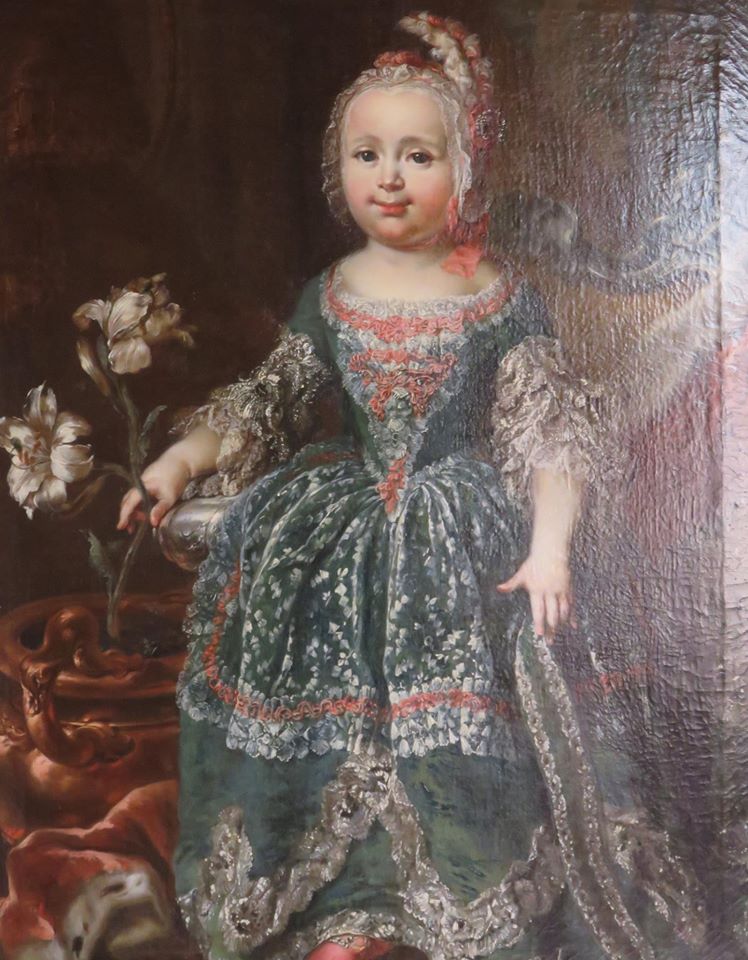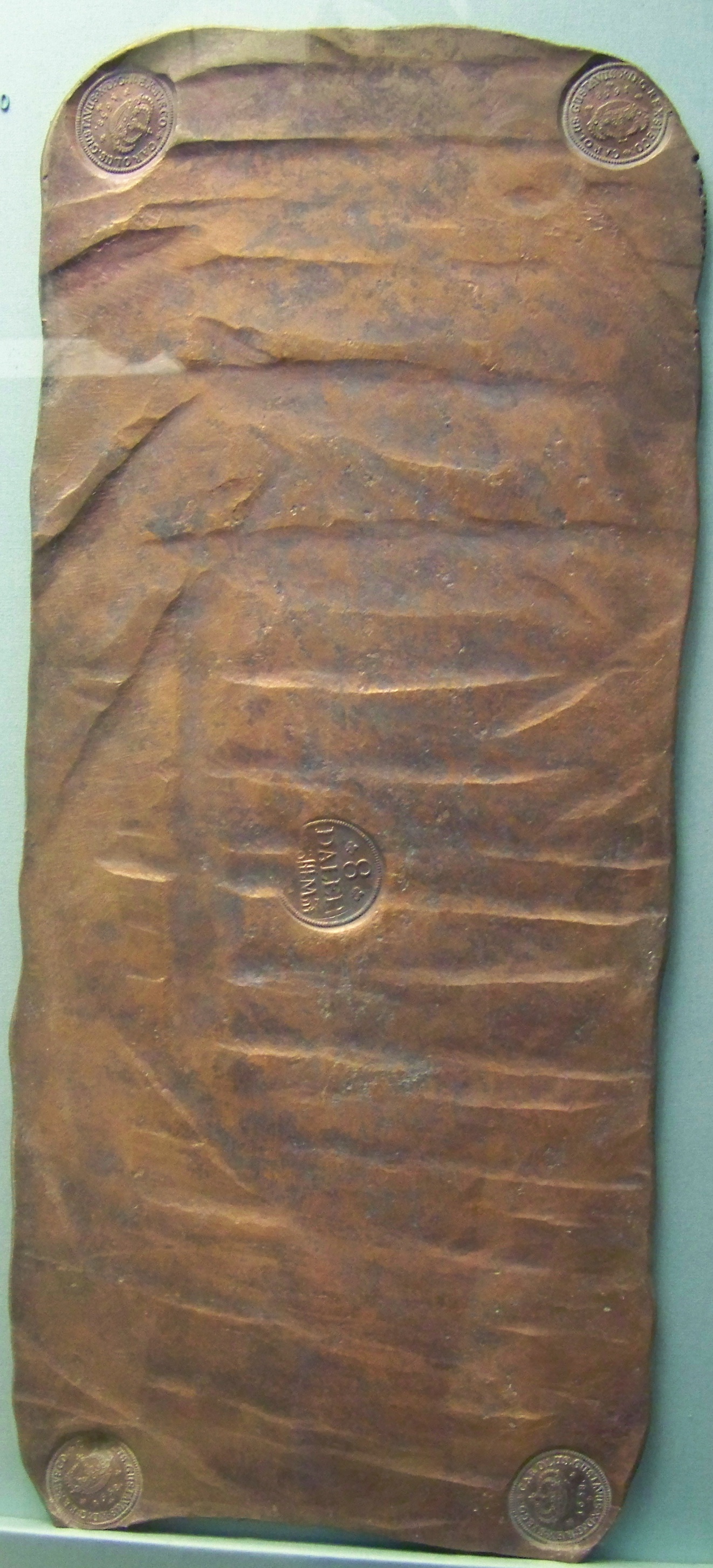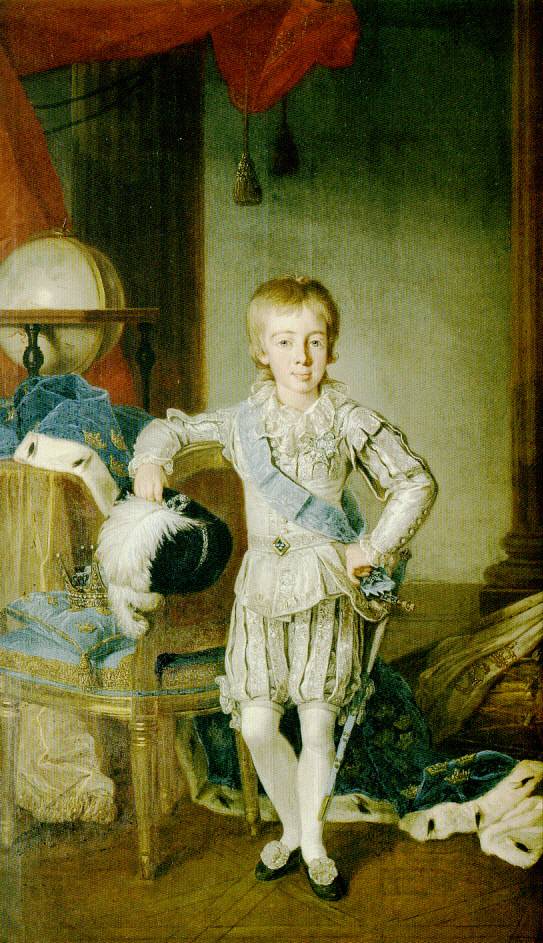|
Adolf Fredrik Munck Af Fulkila
Adolf Fredrik, Count Munck ( Mikkeli, Finland, 28 April 1749 – Massa, Italy, 18 July 1831), was a Swedish and Finnish noble during the Gustavian era. His family name is sometimes inaccurately given as "Munck af Fulkila" because his father usurped this family's title in the Swedish Diet but, as a matter of fact, without genealogical justification. Biography Adolf Fredrik Munck was born to Anders Erik Munck (1720 Skaraborg - 4 September 1779) and Hedvig Juliana Wright (1729 - Lojo 30 December 1808), whom he had wed at St. Michel's then country church on 15 November 1747. The couple first lived in the second lieutenant's homestead Tarkia, part of the Rantakylä manor, in Mikkeli, and this is the birthplace of their son Adolf Fredrik. They had a total of ten children, six of which lived till adult age. He entered the Swedish royal court, where he became a close friend of the king, Gustaf III. Munck became notorious for his love affairs. Among his lovers were Anna Sofia R ... [...More Info...] [...Related Items...] OR: [Wikipedia] [Google] [Baidu] |
Adolf Fredrik Munck Af Fulkila (Jonas Forsslund) - Nationalmuseum - 14829
Adolf Fredrik, Count Munck (Mikkeli, Finland, 28 April 1749 – Massa, Italy, 18 July 1831), was a Swedish and Finnish noble during the Gustavian era. His family name is sometimes inaccurately given as "Munck af Fulkila" because his father usurped this family's title in the Swedish Diet but, as a matter of fact, without genealogical justification. Biography Adolf Fredrik Munck was born to Anders Erik Munck (1720 Skaraborg - 4 September 1779) and Hedvig Juliana Wright (1729 - Lojo 30 December 1808), whom he had wed at St. Michel's then country church on 15 November 1747. The couple first lived in the second lieutenant's homestead Tarkia, part of the Rantakylä manor, in Mikkeli, and this is the birthplace of their son Adolf Fredrik. They had a total of ten children, six of which lived till adult age. He entered the Swedish royal court, where he became a close friend of the king, Gustaf III. Munck became notorious for his love affairs. Among his lovers were Anna Sofia Ramstr ... [...More Info...] [...Related Items...] OR: [Wikipedia] [Google] [Baidu] |
Sophie Magdalena Of Denmark
Sophia Magdalena of Denmark ( da, Sophie Magdalene; sv, Sofia Magdalena; 3 July 1746 – 21 August 1813) was Crown Princess of Sweden by her marriage to Gustav III. She was liked by many in the Caps party, believing she was a symbol of virtue and religion. In 1771, Sophia's husband ascended to the throne and became King of Sweden, making Sophia Queen of Sweden. Their coronation was on 29 May 1772. Early life Princess Sophie Magdalene was born on 3 July 1746 at her parents' residence Charlottenborg Palace, located at the large square, Kongens Nytorv, in central Copenhagen. She was the second child and first daughter of Crown Prince Frederick of Denmark and his first consort, the former Princess Louise of Great Britain, and was named for her grandmother, Queen Sophie Magdalene. She received her own royal household at birth. Just one month after her birth, her grandfather King Christian VI died, and Princess Sophie Magdalene's father ascended the throne as King Frederick ... [...More Info...] [...Related Items...] OR: [Wikipedia] [Google] [Baidu] |
Swedish Riksdaler
The svenska riksdaler () was the name of a Swedish coin first minted in 1604. Between 1777 and 1873, it was the currency of Sweden. The daler, like the dollar,''National Geographic''. June 2002. p. 1. ''Ask Us''. was named after the German Thaler. The similarly named Reichsthaler, rijksdaalder, and rigsdaler were used in Germany and Austria-Hungary, the Netherlands, and Denmark-Norway, respectively. ''Riksdaler'' is still used as a colloquial term for Sweden's modern-day currency. History Penning accounting system The ''daler'' was introduced in 1534. It was initially intended for international use and was divided into 4 marks and then a mark is further subdivided into 8 öre and then an öre is further subdivided into 24 pennings. In 1604, the name was changed to ''riksdaler'' ("daler of the realm", c.f. Reichsthaler). In 1609, the riksdaler rose to a value of 6 mark when the other Swedish coins were debased but the riksdaler remained constant. From 1624, daler were issued ... [...More Info...] [...Related Items...] OR: [Wikipedia] [Google] [Baidu] |
Graf
(feminine: ) is a historical title of the German nobility, usually translated as "count". Considered to be intermediate among noble ranks, the title is often treated as equivalent to the British title of "earl" (whose female version is "countess"). The German nobility was gradually divided into high and low nobility. The high nobility included those counts who ruled immediate imperial territories of "princely size and importance" for which they had a seat and vote in the Imperial Diet (Holy Roman Empire), Imperial Diet. Etymology and origin The word derives from gmh, grave, italics=yes, which is usually derived from la, graphio, italics=yes. is in turn thought to come from the Byzantine Empire, Byzantine title , which ultimately derives from the Greek verb () 'to write'. Other explanations have been put forward, however; Jacob Grimm, Jacob and Wilhelm Grimm, while still noting the potential of a Greek derivation, suggested a connection to got, gagrêfts, italics=yes, m ... [...More Info...] [...Related Items...] OR: [Wikipedia] [Google] [Baidu] |
Numero Sign
The numero sign or numero symbol, №, (also represented as Nº, No, No. or no.), is a Typography, typographic abbreviation of the word ''number''(''s'') indicating ordinal number, ordinal numeration, especially in names and titles. For example, using the numero sign, the written long-form of the address is shortened to , yet both forms are spoken long. Typographically, the numero sign combines as a single Orthographic ligature, ligature the uppercase Latin letter with a usually superscript lowercase O, letter , sometimes underlined, resembling the masculine ordinal indicator . The ligature has a code point in Unicode as a precomposed character, . The ''Oxford English Dictionary'' derives the numero sign from Latin , the Ablative case, ablative form of ("number", with the ablative denotations of "by the number, with the number"). In Romance languages, the numero sign is understood as an abbreviation of the word for "number", e.g. Italian , French , and Portuguese and Spanis ... [...More Info...] [...Related Items...] OR: [Wikipedia] [Google] [Baidu] |
Freiherr
(; male, abbreviated as ), (; his wife, abbreviated as , literally "free lord" or "free lady") and (, his unmarried daughters and maiden aunts) are designations used as titles of nobility in the German-speaking areas of the Holy Roman Empire and in its various successor states, including Austria, Prussia, Bavaria, Liechtenstein, Luxembourg, etc. Traditionally, it denotes the titled royal and noble ranks, rank within the nobility above ' (knight) and ' (nobility without a specific title) and below ' (count, count, earl). The title superseded the earlier medieval form, '. It corresponds approximately to the English ''baron'' in rank. The Duden orthography of the German language references the French nobility title of ''Baron'', deriving from the latin-germanic combination ''liber baro'' (which also means "free lord"), as corresponding to the German "Freiherr"; and that ''Baron'' is a corresponding salutation for a ''Freiherr''.Duden; Definition of ''Baron, der'' (in German)/ref> ... [...More Info...] [...Related Items...] OR: [Wikipedia] [Google] [Baidu] |
Royal Order Of The Seraphim
The Royal Order of the Seraphim ( sv, Kungliga Serafimerorden; ''Seraphim'' being a category of angels) is a Swedish order of chivalry created by King Frederick I on 23 February 1748, together with the Order of the Sword and the Order of the Polar Star. The order has only one class with the dignity of ''Knight'' (''Member'' for women and ''Member of the Cloth'' for clergymen), and is the foremost order of Sweden. The three above-mentioned Orders together with the Order of Vasa form the Orders of His Majesty the King (Swedish ''Kungl. Maj:ts Orden''). A Swedish Knight of the Order of the Seraphim is not referred to as a Knight of the Seraphim, but rather as a ''Knight and Commander of the Orders of His Majesty the King'' ( sv, Riddare och Kommendör av Kunglig Majestäts Orden). This form is used because the Swedish word ''orden'' is an old plural form which indicates that a knight has to be a Commander Grand Cross or Commander of at least one of the other Swedish Orders. Foreig ... [...More Info...] [...Related Items...] OR: [Wikipedia] [Google] [Baidu] |
Knight
A knight is a person granted an honorary title of knighthood by a head of state (including the Pope) or representative for service to the monarch, the church or the country, especially in a military capacity. Knighthood finds origins in the Greek ''hippeis'' and '' hoplite'' (ἱππεῖς) and Roman '' eques'' and ''centurion'' of classical antiquity. In the Early Middle Ages in Europe, knighthood was conferred upon mounted warriors. During the High Middle Ages, knighthood was considered a class of lower nobility. By the Late Middle Ages, the rank had become associated with the ideals of chivalry, a code of conduct for the perfect courtly Christian warrior. Often, a knight was a vassal who served as an elite fighter or a bodyguard for a lord, with payment in the form of land holdings. The lords trusted the knights, who were skilled in battle on horseback. Knighthood in the Middle Ages was closely linked with horsemanship (and especially the joust) from its origins in th ... [...More Info...] [...Related Items...] OR: [Wikipedia] [Google] [Baidu] |
Master Of The Horse
Master of the Horse is an official position in several European nations. It was more common when most countries in Europe were monarchies, and is of varying prominence today. (Ancient Rome) The original Master of the Horse ( la, Magister Equitum) in the Roman Republic was an office appointed and dismissed by the Roman Dictator, as it expired with the Dictator's own office, typically a term of six months in the early and mid-republic. The served as the Dictator's main lieutenant. The nomination of the was left to the choice of the Dictator, unless a specified, as was sometimes the case, the name of the person who was to be appointed. The Dictator could not be without a to assist him, and, consequently, if the first either died or was dismissed during the Dictator's term, another had to be nominated in his stead. The was granted a form of , but at the same level as a , and thus was subject to the of the Dictator and was not superior to that of a Roman consul, Consul. In the ... [...More Info...] [...Related Items...] OR: [Wikipedia] [Google] [Baidu] |
Hedwig Elizabeth Charlotte Of Holstein-Gottorp
Hedwig Elisabeth Charlotte of Holstein-Gottorp ( sv, Hedvig Elisabet Charlotta; 22 March 1759 – 20 June 1818) was Queen of Sweden and Norway as the consort of King Charles XIII and II. She was also a famed diarist, memoirist and wit. She is known by her full pen name (above), though her official name as queen was Charlotte (''Charlotta''). She was born in Eutin the daughter of Duke Frederick August I of Holstein-Gottorp and Princess Ulrike Friederike Wilhelmine of Hesse-Kassel. She grew up in Eutin and married her cousin Charles, Duke of Södermanland, in Stockholm on 7 July 1774 when she was fifteen years old. The marriage was arranged by King Gustav III to provide the throne of Sweden with an heir. The King had not consummated his marriage and had decided to give the task of providing an heir to the throne to his brother. Royal Duchess Prince Charles saw her for the first time in Eutin in 1770 and remarked that she was pretty. The marriage was suggested in 1772, and the ... [...More Info...] [...Related Items...] OR: [Wikipedia] [Google] [Baidu] |
Scandal
A scandal can be broadly defined as the strong social reactions of outrage, anger, or surprise, when accusations or rumours circulate or appear for some reason, regarding a person or persons who are perceived to have transgressed in some way. These reactions are usually noisy and may be conflicting, and they often have negative effects on the status and credibility of the person(s) or organisation involved. Society is scandalised when it becomes aware of breaches of moral norms or legal requirements, often when these have remained undiscovered or been concealed for some time. Such breaches have typically erupted from greed, lust or the abuse of power. Scandals may be regarded as political, sexual, moral, literary or artistic but often spread from one realm into another. The basis of a scandal may be factual or false, or a combination of both. In contemporary times, exposure of a scandalous situation is often made by mass media. Contemporary media has the capacity to sprea ... [...More Info...] [...Related Items...] OR: [Wikipedia] [Google] [Baidu] |
Gustav IV Adolf Of Sweden
Gustav IV Adolf or Gustav IV Adolph (1 November 1778 – 7 February 1837) was King of Sweden from 1792 until he was deposed in a coup in 1809. He was also the last Swedish monarch to be the ruler of Finland. The occupation of Finland in 1808–09 by Russian forces was the immediate cause of Gustav's violent overthrow by officers of his own army. Following his abdication on 29 March 1809, an Instrument of Government was hastily written, which severely circumscribed the powers of the monarchy. The "Instrument" was adopted in 1809 on 6 June, the National Day of Sweden now as well as in his time. It remained in force until replaced in 1974. The crown, now with strictly limited powers, passed to Gustav's uncle Charles XIII, who had no legitimate children; this want of heirs set into motion the quest for a successor, who was found the following year in the person of Jean-Baptiste Jules Bernadotte, the first monarch of the present royal family. ch 37 pp 203-19 Early life Gustav Adolf w ... [...More Info...] [...Related Items...] OR: [Wikipedia] [Google] [Baidu] |





